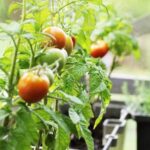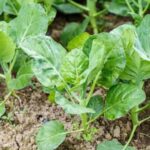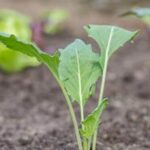Vegetable gardening can be a rewarding and fulfilling activity, but to ensure success, it is crucial to have the right tools. Using the best tools specifically designed for vegetable gardening can make all the difference in the growth and yield of your crops. Whether you are a beginner or an experienced gardener, having the proper tools at your disposal can enhance efficiency, maximize productivity, and ultimately lead to a bountiful harvest.
Investing in high-quality tools for vegetable gardening offers numerous benefits. Firstly, these tools are designed with features that cater specifically to the needs of growing vegetables. From ergonomic handles that provide comfort during long hours of work to sharp blades that enable precise cutting and pruning, the best tools can significantly improve your gardening experience.
Furthermore, utilizing the right tools will not only save you time but also energy. With efficient power tools available in the market today, tasks such as digging, tilling, and weeding can be accomplished much quicker compared to traditional manual methods. This allows you to spend more time on other important aspects of your garden and prevents unnecessary strain on your body.
In addition, using top-notch gardening tools ensures better results by minimizing damage and maximizing care for your plants. Pruning tools with clean-cutting edges promote healthy growth while specialty tools catered specifically towards certain tasks like irrigation or raised bed gardening offer precision and convenience.
To fully reap these benefits and unlock the potential of your vegetable garden, it is essential to explore different types of gardening tools available in the market today. From hand tools like shovels and spades to power tools like trimmers and tillers – this article provides an extensive guide on everything you need to know about choosing and using the best tools for vegetable gardening.
Essential Hand Tools for Vegetable Gardening
When it comes to vegetable gardening, having the right tools is essential for success. While power tools and specialty tools can be helpful in certain situations, hand tools are a necessity for every gardener. They allow for precision and control, making tasks such as planting, weeding, and harvesting much easier. In this section, we will explore the must-have hand tools that every vegetable gardener should have in their toolbox.
- Garden Fork: A garden fork is an essential tool for loosening soil, removing weeds, and aerating the ground. It has sturdy tines that can penetrate compacted soil and break it apart without damaging plant roots. Look for a garden fork with a comfortable handle and durable construction.
- Hand Trowel: A hand trowel is a versatile tool that is used for digging small holes, transplanting seedlings, and mixing soil amendments. Choose a hand trowel with a sharp stainless steel blade that won’t rust or bend easily. Look for one with an ergonomic handle for comfortable use.
- Transplanting Spade: A transplanting spade is designed specifically for digging deep holes when transplanting larger plants or moving them from one location to another. It has a long handle and a narrow blade that easily cuts through compacted soil without disturbing nearby plants.
- Weeder: Weeds can quickly take over a vegetable garden if left unattended. A weeder is an essential tool for removing weeds from the roots, ensuring they don’t grow back. There are different types of weeders available, such as dandelion weeders or hoes with sharp points.
- Pruning Shears: While mainly used for pruning shrubs and trees, pruning shears are also handy in vegetable gardens for removing damaged leaves or stems from plants. Look for a pair with sharp blades that can easily cut through thick stems without crushing them.
By having these essential hand tools in your gardening arsenal, you will be well-prepared to take on any task that comes your way. Remember to choose tools made from high-quality materials and ergonomic designs for maximum comfort and durability. Happy gardening.
- Garden Fork
- Hand Trowel
- Transplanting Spade
- Weeder
- Pruning Shears
+
Top 5 Power Tools for Vegetable Gardening
Electric Tiller
One of the top power tools that can greatly enhance efficiency and productivity in your vegetable garden is an electric tiller. This tool helps to prepare the soil by loosening it up, making it easier for planting and improving overall plant growth.
With its powerful motor, an electric tiller can quickly break up compacted soil and remove weeds, saving you time and effort compared to manual tilling. Look for models with adjustable tilling widths and depths to suit different types of vegetables and garden beds.
Cordless Leaf Blower
Keeping your vegetable garden clean from fallen leaves, debris, and other unwanted materials is important for maintaining a healthy growing environment. A cordless leaf blower is a versatile power tool that allows you to easily clear out these elements without the hassle of dealing with tangled cords or limited mobility. Look for a lightweight and ergonomic design that provides sufficient blowing power to effectively clean your garden while being easy to maneuver around plants.
Electric Pruning Shears
Pruning is an essential task in vegetable gardening as it helps promote plant health, improve air circulation, and encourage robust growth. Electric pruning shears are a game-changer when it comes to making trimming easier and more efficient. These tools feature sharp blades powered by electricity to quickly cut through branches and stems with minimal effort on your part. Look for models with adjustable cutting angles and safety features such as locking mechanisms to ensure safe operation.
Battery-Powered Hedge Trimmer
For those who have hedges or taller plants in their vegetable gardens, a battery-powered hedge trimmer can be invaluable in maintaining their shape and size. These trimmers are lightweight, portable, and offer the convenience of cordless operation. Look for models with long blades that can reach higher areas without the need for ladders, and adjustable cut settings to achieve the desired hedge shape.
Battery-Powered Chainsaw
While not a tool you may think of immediately for vegetable gardening, a battery-powered chainsaw can come in handy for larger tasks such as cutting firewood or removing fallen branches from your garden. These tools offer the convenience of cordless operation and are generally lighter and easier to handle compared to their gas-powered counterparts. Look for models with safety features such as chain brake systems and automatic oiling mechanisms for hassle-free use.
Overall, investing in these top power tools will greatly enhance efficiency and productivity in your vegetable garden-vegetable-pizzas/” target=”_blank” rel=”follow noopener”>garden. They will minimize the time and effort required for various tasks, allowing you to focus on enjoying the process of gardening while achieving bountiful harvests.
Diving into the World of Specialty Tools for Vegetable Gardening
Understanding the Importance of Specialty Tools
When it comes to vegetable gardening, having the right tools can make all the difference. While it’s important to have essential hand tools and power tools, there are also specialty tools that can enhance your gardening experience and improve your overall results. Specialty tools are designed to tackle specific tasks and challenges in the vegetable garden, making them valuable additions to any gardener’s toolkit.
Unveiling Hidden Gems
There are a wide variety of specialty tools available for vegetable gardening, each serving a unique purpose. One such tool is the soil knife, also known as a hori-hori knife. This versatile tool is perfect for tasks like digging planting holes, cutting through roots, and removing weeds. Its serrated edge makes it easy to slice through tough soil or plant material, while its pointed tip allows for precise digging in tight spaces.
Another handy specialty tool is the harvest shears. These scissors-like tools are specifically designed for harvesting vegetables without damaging the plants. With their sharp blades and ergonomic handles, harvest shears make quick work of gathering produce like lettuce leaves or herbs.
For those dealing with compacted soil or tight spaces, a root digger can be a game-changer. This tool has a long handle and sturdy tines that allow you to effortlessly break up soil clumps and remove stubborn weeds with deep taproots.
Expanding Your Gardening Arsenal
Adding specialty tools to your gardening arsenal not only improves efficiency but also opens up new possibilities in your vegetable garden. From seeders and dibblers for precise planting to nut gatherers for collecting fallen nuts without bending over, these hidden gems can save you time and effort while ensuring optimal results.
Remember to consider the specific needs of your vegetable garden when selecting specialty tools. Think about the tasks you commonly encounter or areas where you struggle using regular hand tools. By investing in a few specialty tools, you can take your vegetable gardening to the next level and uncover the true potential of your garden.
Choosing the Right Gardening Gloves
When it comes to vegetable gardening, one often overlooked but essential tool is a good pair of gardening gloves. Not only do they protect your hands from cuts, scrapes, and blisters, but they can also maximize comfort while working in the garden. Choosing the right gardening gloves can make all the difference in your gardening experience.
Types of Gardening Gloves
There are various types of gardening gloves available on the market, each designed for different purposes and preferences. Here are some popular options to consider:
- Cotton or Canvas Gloves: These gloves are lightweight and breathable, making them perfect for light gardening tasks like weeding or planting small seeds.
- Leather Gloves: Leather gloves provide excellent protection against thorns, sharp objects, and rough surfaces. They are more durable than fabric gloves and are suitable for heavy-duty tasks such as digging and pruning.
- Nitrile Gloves: Nitrile gloves are resistant to punctures and abrasions, making them ideal for handling chemicals or working with wet soil. They offer a snug fit and excellent dexterity.
Finding the Right Fit
Finding gloves that fit properly is crucial for both protection and comfort. Ill-fitting gloves can cause discomfort and make it difficult to perform tasks effectively. Here’s how to find the right fit:
- Determine Your Glove Size: Measure your hand circumference around the widest part of your palm. Use this measurement to find the corresponding glove size on the manufacturer’s sizing chart.
- Try Them On: Visit a garden supply store or try on different pairs of gloves before purchasing. Make sure they feel comfortable and allow you to move your fingers freely.
- Consider Adjustable Closures: Some gloves have adjustable closures, such as Velcro straps or elastic bands, which can provide a more customized fit.
Maintaining and Cleaning Your Gloves
Proper maintenance and cleaning of your gardening gloves can extend their lifespan and keep them in good condition. Here are some tips:
- Inspect for Damage: Regularly check your gloves for any signs of wear, tear, or damage. Replace them if necessary to ensure optimal protection.
- Clean According to Instructions: Follow the manufacturer’s instructions for cleaning your gloves. Some can be machine-washed, while others require handwashing with mild detergent.
- Air Dry: After washing, let your gloves air dry completely before storing them. Avoid using direct heat sources like dryers or radiators, as they can damage the gloves.
Choosing the right gardening gloves is an important step in protecting your hands while maximizing comfort during hours spent tending to your vegetable garden. Consider the type of work you’ll be doing and find gloves that fit properly to ensure a pleasant and safe gardening experience.
The Ultimate Guide to Selecting the Best Pruning Tools for Your Vegetable Garden
Pruning is an important aspect of vegetable gardening as it helps promote healthy growth, control the shape and size of plants, and improve overall productivity. To achieve effective pruning, it is essential to have the right tools that can make the task easier and more efficient. This section will provide a comprehensive guide to selecting the best pruning tools for your vegetable garden.
- Pruning Shears: Also known as hand pruners or secateurs, pruning shears are a must-have tool for any vegetable gardener. They are perfect for precision pruning tasks such as removing small branches or trimming back unruly foliage. When selecting pruning shears, look for ones with a sharp blade made from quality steel and comfortable handles that provide a good grip.
- Loppers: For thicker or harder-to-reach branches, loppers come in handy. These long-handled pruning tools have large cutting blades designed to make clean cuts on branches up to 2 inches thick. Look for loppers with sharp blades, ergonomic handles, and a sturdy construction that can withstand frequent use.
- Pruning Saws: Sometimes, larger branches or even tree trunks need to be pruned in the vegetable garden. A pruning saw is the ideal tool for this task. Look for saws with a curved blade and sharp teeth that cut on both the push and pull stroke for efficient cutting power.
- Hedge Shears: If you have hedge plants or shrubs in your vegetable garden that require shaping or regular maintenance, hedge shears can be useful. These tools feature longer blades than pruning shears and are designed specifically for trimming hedges or dense foliage.
- Pole Pruners: For taller trees or hard-to-reach branches, pole pruners are essential. These tools consist of a long pole with a cutting mechanism at one end and are operated by pulling on ropes attached to the handle. When choosing pole pruners, consider the length and weight of the pole, as well as the cutting mechanism’s quality and durability.
Having the right pruning tools can make a significant difference in the health and productivity of your vegetable garden. By selecting tools that are comfortable, durable, and suitable for the task at hand, you can ensure effective pruning and promote optimal growth in your plants.
| Pruning Tool | Main Purpose |
|---|---|
| Pruning Shears | Precision pruning tasks, removing small branches or trimming foliage. |
| Loppers | Cutting thicker branches up to 2 inches thick. |
| Pruning Saws | Cutting larger branches or tree trunks. |
| Hedge Shears | Trimming hedges or dense foliage. |
| Pole Pruners | Cutting taller trees or hard-to-reach branches. |
Best Irrigation Tools for Vegetable Gardening
Irrigation is a crucial aspect of vegetable gardening as it ensures that plants receive the necessary amount of water for optimal growth and development. The right irrigation tools can make the process effortless and efficient, saving you time and effort while promoting healthy plant growth. In this section, we will explore the best irrigation tools for vegetable gardening and how they can enhance your gardening experience.
One essential tool for vegetable garden irrigation is a soaker hose. Soaker hoses are made of a porous material that allows water to seep out slowly and evenly along the length of the hose. This enables deep watering without wasting water through runoff or evaporation. Soaker hoses are particularly useful for garden beds, as they deliver water directly to the root zone. They can be laid on the surface or buried under mulch for a more discreet appearance.
Another valuable tool for watering your vegetable garden is a drip irrigation system. Drip irrigation uses small emitters to deliver water directly to each plant’s root zone, minimizing evaporation and ensuring targeted watering. This method conserves water compared to overhead sprinklers and reduces weed growth by keeping foliage dry. Drip irrigation systems can be set up with timers, allowing you to automate the watering process and ensure consistent moisture levels in your garden.
For larger vegetable gardens or those with raised beds, a sprinkler system may be more suitable. Sprinklers provide even coverage across a wider area, making them ideal for larger plots. There are various types of sprinkler systems available, including oscillating sprinklers, impact sprinklers, and rotating sprinklers. Consider factors such as your garden size, water source pressure, and desired coverage area when selecting a sprinkler system for your vegetable garden.
| Irrigation Tool | Advantages |
|---|---|
| Soaker Hose | – Delivers water directly to the root zone
|
| Drip Irrigation System | – Targets water delivery to each plant’s root zone
|
| Sprinkler System | – Provides even coverage for larger garden areas
|
Elevated Planting
Raised bed gardening has become increasingly popular among vegetable gardeners due to its numerous benefits. The use of raised beds allows for better soil drainage, improved weed control, and easier access for gardeners with limited mobility. To fully unleash the potential of raised bed gardening, it is essential to have the right tools specifically designed for this type of gardening.
One of the must-have tools for raised bed gardening is a high-quality hand cultivator or a hand fork. These tools are perfect for loosening and aerating the soil in the raised beds. They allow you to break up compacted soil, remove weeds, and mix in compost or fertilizer easily. Look for cultivators or forks with sturdy tines and comfortable handles for ease of use.
Another important tool to consider is a long-handled hoe. This tool is ideal for maintaining the pathways between raised beds, keeping them free from weeds. It can also be used to break up soil clumps and level the surface of the beds. Choose a hoe with a sharp blade and an ergonomic handle that provides good grip and control.
In addition to these hand tools, there are also specialized tools available specifically for raised bed gardening tasks. For example, a long-handled seed sower can help you evenly distribute seeds across the narrow width of a raised bed without wasting any seeds or disturbing existing seedlings. There are also corner supports and stakes designed for supporting trellises or structures in raised beds, allowing you to grow vertical crops like tomatoes or beans.
Investing in these specialized tools will not only make your work easier and more efficient but will also contribute to healthier plants and higher yields in your raised bed garden. With the right tools at your disposal, you can truly unleash the potential of elevated planting in your vegetable gardening endeavors.
How to Maintain and Care for Your Vegetable Gardening Tools
To ensure that your vegetable gardening tools remain in optimal condition and have a long lifespan, proper maintenance and care are essential. By implementing a few simple practices, you can protect your investment and continue to enjoy the benefits of using high-quality tools year after year.
Firstly, cleaning your tools after each use is crucial for preventing the buildup of dirt, rust, and plant debris. Use a stiff brush or steel wool to remove any residue from the blades or surfaces of your tools. For stubborn dirt or sap, you can also soak them in warm soapy water before scrubbing. Once clean, thoroughly dry your tools to prevent rusting.
Another important aspect of maintaining your gardening tools is regular sharpening. Sharp blades make garden tasks easier and more efficient, allowing you to cut through plant material cleanly. Tools that may require sharpening include pruners, shears, loppers, and shovels with sharp edges. You can use a file or sharpening stone to restore a sharp edge, following the manufacturer’s instructions for each tool.
Additionally, it is important to keep an eye on the handles of your gardening tools. Wooden handles may begin to splinter or crack over time due to exposure to moisture or sun. Regularly inspect your handles for signs of wear and tear and sand them down if necessary. Furthermore, applying linseed oil or another protective coating can help extend the life of wooden handles.
Lastly, proper storage is key to maintaining the condition of your vegetable gardening tools. Keep them in a dry area such as a shed or garage when not in use. Hanging them up or placing them in a dedicated tool rack will prevent them from becoming lost or damaged.
By implementing these maintenance practices into your routine, you can ensure that your vegetable gardening tools remain in top condition for many growing seasons to come. With proper care and attention, these valuable tools will continue to assist you in cultivating healthy and productive vegetable gardens year after year.
Conclusion
In conclusion, investing in quality tools for vegetable gardening is a wise choice that can greatly impact the success and productivity of your garden. By using the best tools available, you can save time and effort while maximizing the growth and health of your vegetables.
Throughout this article, we have explored the importance and benefits of using the right tools for vegetable gardening. We have discussed essential hand tools, top power tools, specialty tools, gardening gloves, pruning tools, irrigation tools, elevated planting tools, as well as maintenance and care tips for your gardening tools.
Using high-quality tools not only makes gardening tasks easier and more efficient but also ensures that you are providing the best care for your plants. From preparing the soil to watering and pruning, each step requires specific tools that are designed to perform their respective tasks effectively.
By investing in quality gardening tools, you are not only making a long-term investment but also increasing your chances of achieving a bountiful harvest. With proper maintenance and care, these tools can last for years, allowing you to continue reaping the benefits of your investment.
Frequently Asked Questions
What does every vegetable gardener need?
Every vegetable gardener needs several key things to be successful. First and foremost, they need good quality soil in which to grow their plants. This means ensuring the soil is fertile, well-draining, and has a balanced pH level.
The gardener also needs seeds or seedlings to plant, as well as access to water for irrigation. Additionally, having basic garden supplies like pots or planters, stakes or trellises for support, and organic fertilizers can greatly enhance the vegetable gardening experience. Finally, a vegetable gardener needs determination and patience because growing vegetables takes time and effort.
What tools are used in a vegetable garden?
A variety of tools are used in a vegetable garden to make tasks easier and more efficient. One common tool is a shovel or spade used for digging holes when planting or transplanting seedlings. Another important tool is a garden rake or hoe that helps in cultivating the soil and removing weeds around the plants.
Hand pruners or shears are useful for trimming unwanted branches or harvesting vegetables without damaging the plants. For larger gardens, wheelbarrows come in handy for transporting soil, compost, or other materials needed throughout the garden. Finally, many vegetable gardeners find gloves essential to protect their hands from dirt, blisters, and potential hazards like thorns.
What is the most important tool every gardener should have?
The most important tool that every gardener should have is knowledge – specifically about gardening principles and practices. Having a solid understanding of how vegetables grow, what their specific requirements are (such as sunlight, watering needs), and how to identify and address common problems (like pests or diseases) is crucial for success in a vegetable garden.
Without this foundational knowledge, even with all the physical tools available, it will be difficult to achieve healthy yields from one’s crops year after year.

If you’re looking to get into vegetable gardening, or are just looking for some tips on how to make your current garden better, then you’ve come to the right place! My name is Ethel and I have been gardening for years. In this blog, I’m going to share with you some of my best tips on how to create a successful vegetable garden.





